
Switzerland - SZU Sihltalbahn
For a full scale picture, please click on the picture shown !
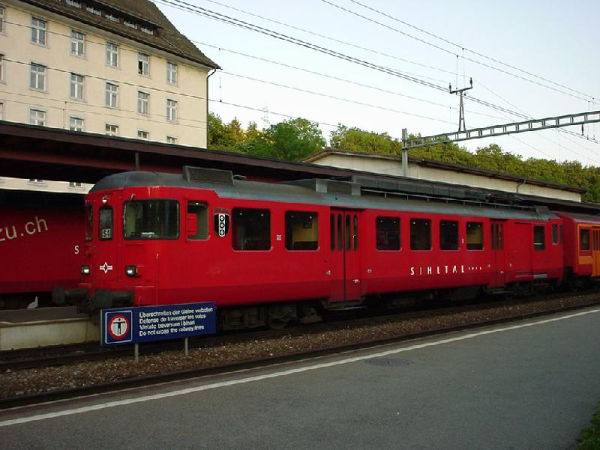
Sihltalbahn used to be a part of the SZU or Sihltal - Zürich - Uetliberg -Bahn Gruppe still when these pictures were taken.
The SZU was a combination of two Zürich region private railroads, the Sihltalbahn, which operates the S-Bahn line S4 from Zürich
up the valley of the Sihl river and the Uetlibergbahn, which climbs steeply up the hillside of Uetliberg, landmark of Zürich.
Synergy between these two lines was modest: although both are normal gauge railroads, the Sihltalbahn was electrified with the usual
'big railroads' 15 kV AC, 16,7 Hz whereas the Uetlibergbahn used the tram-like DC 1200V DC - and with a very exotic aerial
(please see the section of Uetlibergbahn). The combined companies that made up SZU split again in 1999-2000.
Sihltalbahn is a 28 km long piece of normal gauge, normal electricity railroad from Zürich up the Sihl valley, connecting nowadays
a series of suburban areas to central Zürich. The typical Sihltalbahn train is either a doubledecker EMU type train or a locomotive led, short commuter
train with a modern Re 4/4 (Re 456) locomotive and one or two red double decker coaches in its middle plus one or two normal coaches, the last
one a steering cab coach. Although a modern suburban railroad, the Sihltalbahn has traditions: the track was opened for service
already 10.5.1875 and still today operates several historic trains in addition to the busy city commuters.
This was the BDe 4/4 no. 94 (or BDe 576 594 in the new numbering scheme) of SZU Sihltalbahn. This EMU was orderer from SWS/MFO in
1968. It weighed 58 tons and had a maximum speed of 70 km/h. SZU had four of these EMUs, which typically ran up to four coaches long trains from Zürich
to Langnau.
Photo from Langnau station 30.5.1999 by Ilkka Siissalo

A view of the BDe 4/4 no. 94 (or BDe 576 594 in the newer notation) of SZU Sihltalbahn, in front of a train
ready to leave towards Zürich.
Photo from Langnau station 30.5.1999 by Ilkka Siissalo.
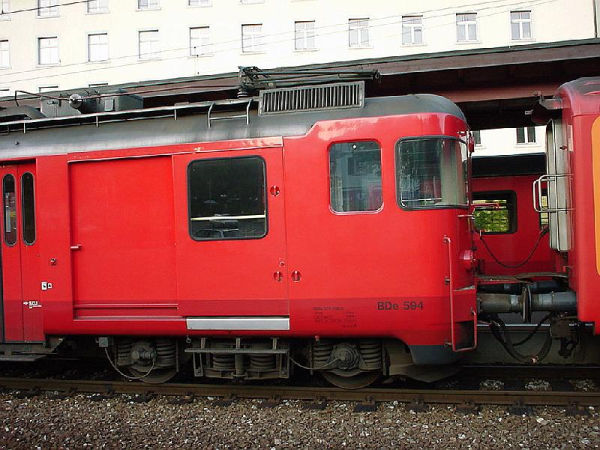
A closeup of the BDe 4/4 no. 94 (or BDe 576 594) of SZU Sihltalbahn, showing the cargo
department. Rounded corners were very typical of the design of EMU trains of the 1960´s.
Photo from Langnau station 30.5.1999 by Ilkka Siissalo.
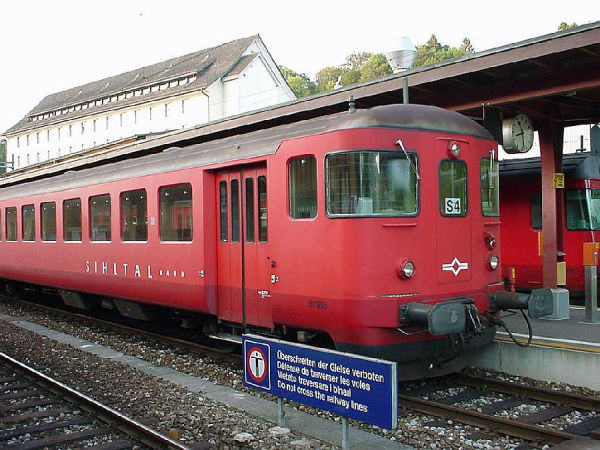
BT995 coach of the SZU Sihltalbahn with a driver´s cab in the other end of a train
led by the BDe 4/4 EMU no.94. These matching coaches were also from the late 1960´s.
Photo from Langnau station 30.5.1999 by Ilkka Siissalo.
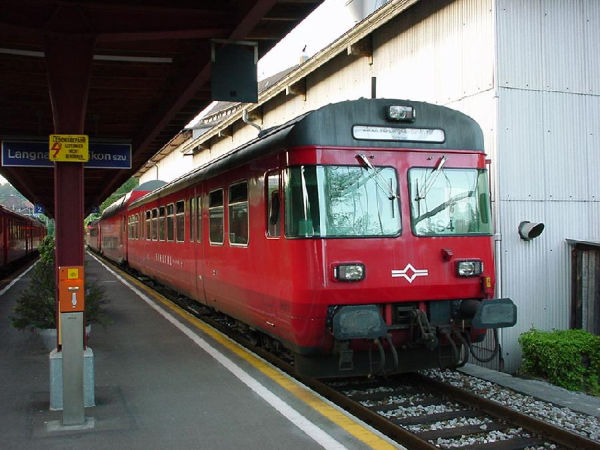
A bit later design, a typical 1970´s coach with a driver´s cockpit of the SZU Sihltalbahn.
This one was used to steer a 3 coach train powered by a pushing Re 4/4 locomotive.
Photo from Langnau station 30.5.1999 by Ilkka Siissalo.
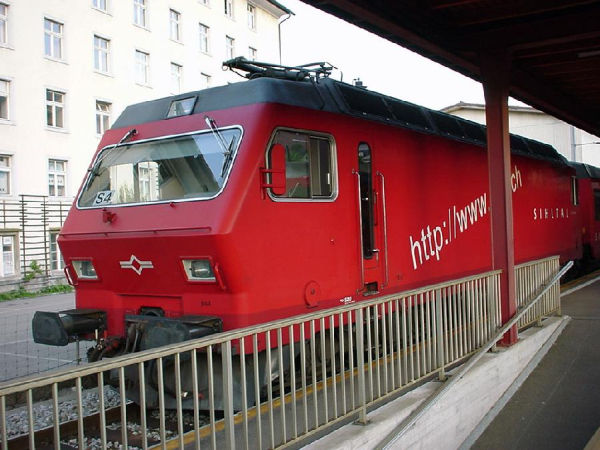
Re 4/4 no. 44 or nowadays officially Re 456 544 of the SZU Sihltalbahn. This type was developed
based on the SBB Re 4/4 IV series, but designed for the small private railroads.
It was their first locomotive based on thyristor technology. This type was used by Sihltalbahn,
Bodensee-Toggenburgbahn BT, Südostbahn, Appenzeller Bahnen and EBT and it became quickly famous and popular.
It was built by SLM and ABB in 1993. The locomotive weighs 69 t and
has a maximum speed of 130 km/h - a speed it never needs on the short Sihltal line. The text painted
promotes the SZU website www.szu.ch.
Photo from Langnau station 30.5.1999 by Ilkka Siissalo.
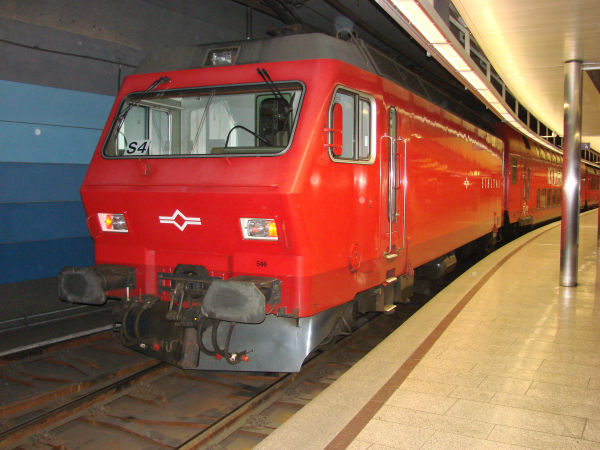
Re 4/4 - or as the notation now goes, Re 456 - no.546 is a very typical SZU Sihltalbahn locomotive, used especially
during rush-hour intensive traffic with long trains including doubledecker coaches.
Picture from SZU's underground station under the Zürich main station 31.12.2007 by Ilkka Siissalo.
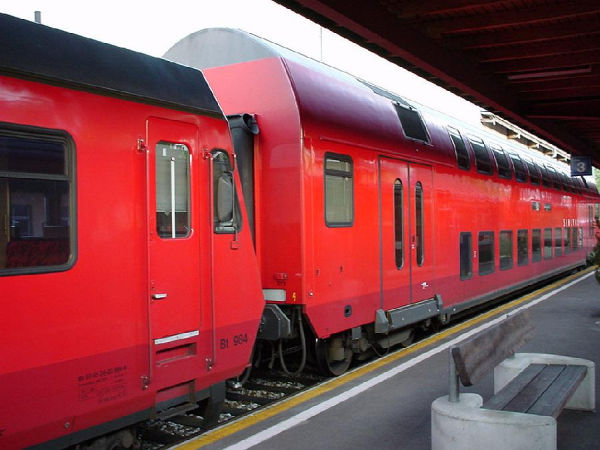
To keep trains short, doubledecker coaches are widely used in Swiss regional trains. The
Sihltalbahn trains are short anyway and they usually only have just one double decker coach
in the middle of the train.
Photo from Langnau station 30.5.1999 by Ilkka Siissalo.
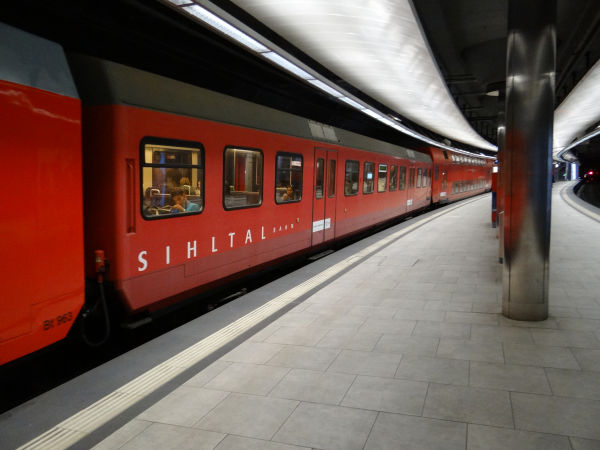
A typical SZU Sihltalbahn train during afternoon rush hours. On the right, far outside of the picture area, was an electric locomotive of the type
Re 456, then two new Stadler made low-floor coaches, two doubledecker coaches and at the end of the train again two new singledecker Stadler coaches, the last one with
a driver's cab. This picture shows one of the new Stadler made single decker coaches.
Picture from the underground SZU station under Zürich main station 2.10.2015 by Ilkka Siissalo.
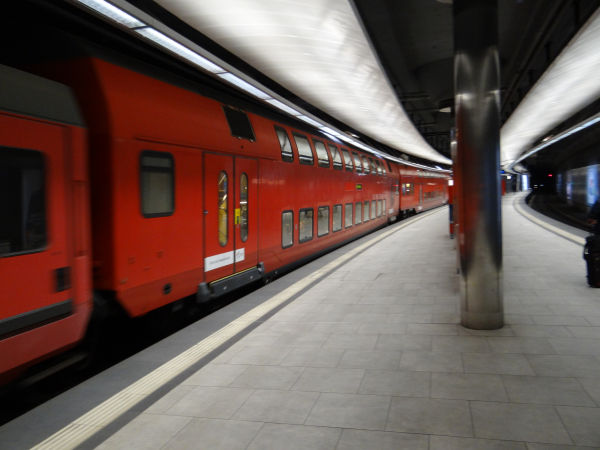
The same train as in the picture above. These were the two doubledecker coaches in the middle of the train. They are similar to the ones that DB uses in Germany
and they have been built by Bombardier in Germany.
Picture from the underground SZU station under Zürich main station 2.10.2015 by Ilkka Siissalo.
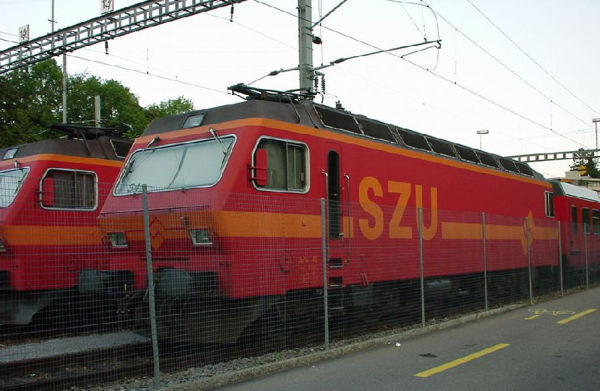
SZU Sihltalbahn Re 4/4 no. 46 and 47 parked side by side waiting for the busy morning traffic
to begin. Unlike their sibling, the no. 44, these two still show the older SZU painting, the
old company logo and use the old numbering notation. Their "names" in the new schemes would
be Re 456 546 and 547 respectively. Each one had a train of 4 coaches, one of which was a
doubledecker coach.
Photo from Langnau station 30.5.1999 by Ilkka Siissalo.
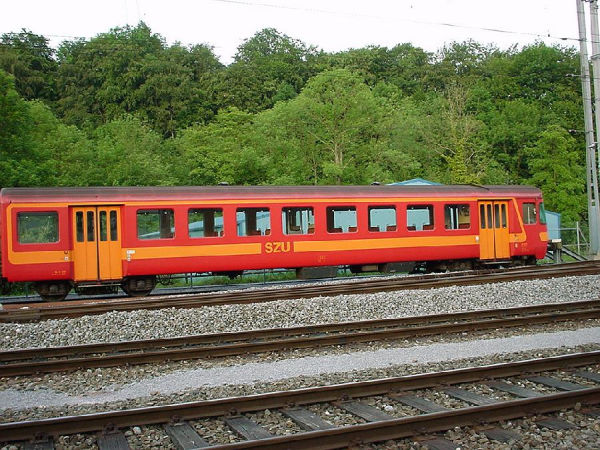
An unidentified SZU Sihltalbahn coach from the 1970´s with a driver´s cab. This one was
used to steer an older train led by one of the SZU BDe 4/4 (new numbering BDe 576 or 577)
EMU´s. These older trains were in 1999 used mainly at rush hour times.
Photo from Langnau station 30.5.1999 by Ilkka Siissalo.
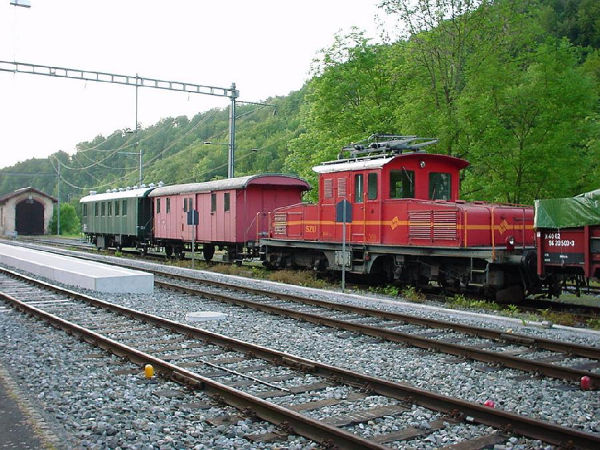
A historic SZU Sihltalbahn train, in 1999 used as a movable base for railroad construction
workers. The locomotive Ce 4/4 no 41. (old numbering De 3/4) is from 1926, a famous "small crocodile" type
- the only one of its kind ever and today a real rarity. It was a further development from the famous SBB
"crocodiles" of type Ce 6/8. It generated 490 kW of power, which in the 1920s was a a miracle for such a small locomotive.
Photo from Sihlwald station 30.5.1999 by Ilkka Siissalo.
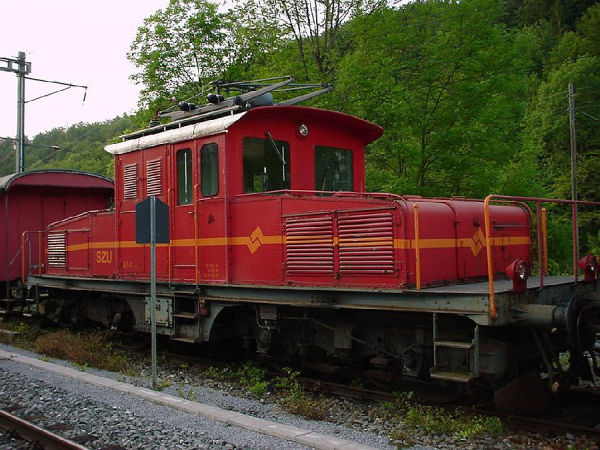
A closeup of the Ce 4/4 no 41 'crocodile' locomotive.
Photo from Sihlwald station 30.5.1999 by Ilkka Siissalo.
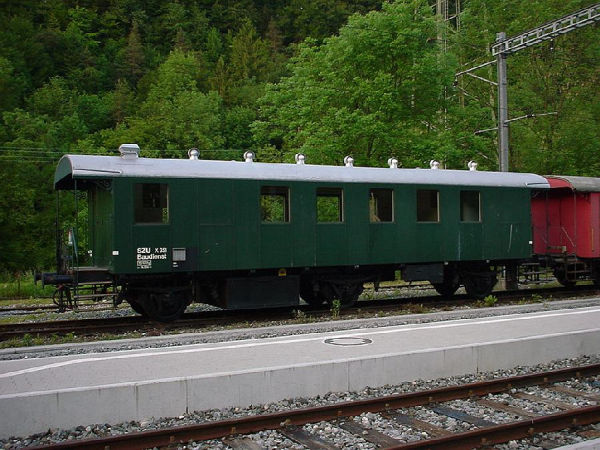
A Sihltalbahn coach from the 1930´s, the X 351 is today a movable base for construction
workers, but it´s still in surprisingly good shape. It gives a glimpse to the travelling on the Sihltalbahn in the pre-war times.
Photo from Sihlwald station 30.5.1999 by Ilkka Siissalo.

